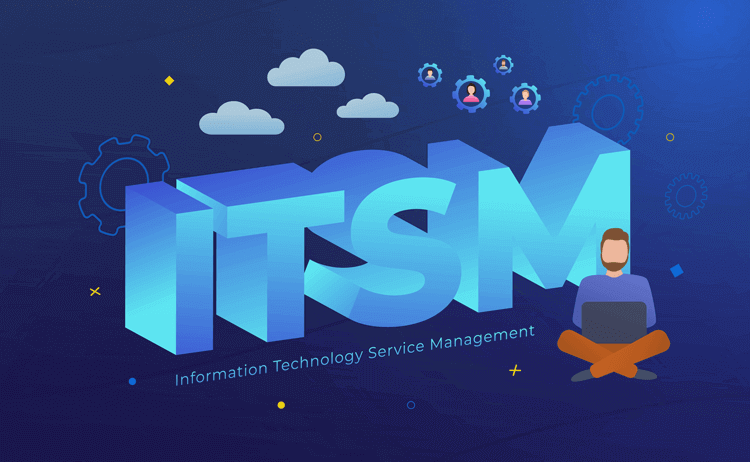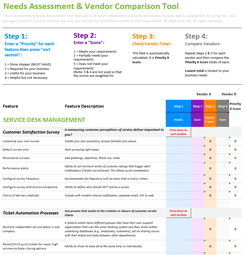How to Build a Future-Ready IT Transformation Strategy
As technology keeps evolving, building a future-ready IT transformation strategy is essential for CIOs and IT leaders looking to modernize systems and support business growth. Unlike broader digital transformation, IT transformation focuses on improving IT infrastructure, processes, and teams to boost innovation and agility.

This guide explains the key steps, the roles involved, and what tools can help make your transformation a success.
What is IT Transformation?
IT transformation focuses on modernizing IT systems, processes, and teams to ensure technology aligns with business objectives and supports future growth.
For CIOs and IT leaders, it goes beyond infrastructure upgrades — it's about:
- Building a foundation for innovation
- Improving operational efficiency
- Staying agile in a fast-changing digital landscape
By doing so, organizations can outpace competitors and meet evolving customer expectations.
While digital transformation focuses on integrating technology into all areas of a business, IT transformation is specifically about modernizing the IT department to better serve the organization.
This means:
- Replacing outdated systems with modern tools like cloud platforms
- Automating repetitive processes to save time
- Reorganizing IT teams to work more efficiently
The goal is to create a responsive IT environment that supports company goals, adapts to new challenges, and delivers measurable value.
Key Areas of IT Transformation
They often include the following:
- Streamlining IT operations to improve efficiency and ultimately reduce costs
- Implementing newer technologies such as automations and Artificial Intelligence (AI)
- Enhancing team collaboration with agile workflows and cross-functional alignment
- Strengthening security to protect sensitive data and maintain compliance
Steps to Craft an Effective IT Transformation Strategy
A successful IT transformation strategy is built on clear goals, careful planning, and alignment with business objectives. Below are the essential steps CIOs and IT leaders should follow to bring a smooth and impactful transformation:
-
Evaluate Your Current IT Environment
Begin with a thorough audit of your IT infrastructure, processes, and tools. Identify inefficiencies, outdated systems, and gaps in meeting current business needs.
-
Define Clear Goals Aligned with Business Priorities
Set specific, measurable objectives for your IT transformation. These might include improving scalability, reducing costs, or enabling faster product delivery. Make sure these goals support the broader goals of the organization.
-
Create a Comprehensive Roadmap
Develop a step-by-step plan that outlines priorities, timelines, and resource allocation. Focus on high-impact initiatives first, such as migrating to the cloud or automating routine processes.
-
Modernize Your IT Infrastructure
Embrace new technologies like cloud computing, artificial intelligence, and DevOps practices. Modern infrastructure not only improves efficiency but also supports innovation and scalability.
-
Adopt Agile Methodologies
Shift to agile workflows that bring flexibility and continuous improvement. This involves selecting partners that provide regular updates and opportunities to upscale to meet new goals or trends as they arise.
-
Invest in Skills and Team Collaboration
Provide training to upskill your IT workforce and encourage cross-departmental collaboration. Building a culture of learning and teamwork is key to long-term success.
-
Monitor Progress
Use metrics like system uptime, cost savings, and user satisfaction to measure the success of your transformation efforts. Regularly revisit and refine your strategy based on these insights.
Ready to get started? To ensure your IT transformation stays on track, effective change management is essential. Giva's Change Management Software provides a powerful solution to streamline the change approval process, track modifications, and minimize risks. With its user-friendly interface and real-time reporting, Giva empowers IT leaders to manage complex transformations with confidence. Ready to take control of your IT changes? Learn more about Giva's Change Management Software today.
Who Drives IT Transformation?
Successful IT transformation is a team effort, requiring leadership and collaboration across various roles and departments. Here are the key players driving the process:
-
The CIO: Architect of Transformation
As the chief strategist, the Chief Information Officer, or CIO, oversees the entire transformation effort.
They:
- Align IT goals with business priorities
- Secure executive buy-in
- Ensure resources are allocated as required
-
IT Leaders and Managers
IT directors and team leads play a vital role in managing day-to-day execution.
They:
- Turn strategies and goals into actionable plans
- Oversee and lead project teams
- Monitor progress
-
IT Teams
The technical backbone of transformation, IT teams:
- Handle implementation tasks like migrating systems
- Deploy new technologies
- Troubleshoot challenges
Their expertise helps bring a smooth execution.
Note: Depending on the size of the organization, this 'hands-on' role might be fulfilled by IT Leaders or Managers. This is especially true in smaller organizations with less staff.
-
Business Stakeholders
Business stakeholders include:
- Department heads
- Team managers
- Executives from areas like finance, operations, marketing, and sales
They collaborate with IT to:
- Ensure that solutions address specific departmental needs
- Align with organizational goals
- Integrate seamlessly into existing workflows
-
External Partners
Third-party consultants, technology vendors, and service providers can offer expertise and solutions to accelerate transformation. They help bridge gaps in knowledge and resources.
Additional Reading: Top 20 Tools of Communication: Business Success Today, Trends of Tomorrow
The Bottom Line: Achieving IT Transformation Excellence
For CIOs and IT leaders, IT transformation is more than just modernizing technology — it's about aligning IT with business goals, unlocking innovation, and preparing for the future. By following a clear strategy, involving the right stakeholders, and leveraging tools like Giva's Change Management software, organizations can effectively manage IT changes, reduce risks, and provide a smooth transformation process.
IT transformation is an ongoing project, not a one-time event. Success comes from a commitment to continuous improvement, agility, and a focus on delivering value across the organization. With the right plan — and the right tools — your IT team can become a critical enabler of growth and competitive advantage in an ever-evolving digital landscape.
Giva Can Help With All Your IT Transformation Needs
Giva's IT help desk, ITSM and change management software offer easy-to-use and set-up solutions to help streamline your IT organizations.
Features include:
- Intuitive and flexible dashboard
- Helpful copilots for quicker issue handling
- Ticket macros for faster UI interactions
- Multiple service desks for different departments
To learn more, book a free Giva demo to see our solutions in action, or start your own free, 30-day trial today!





